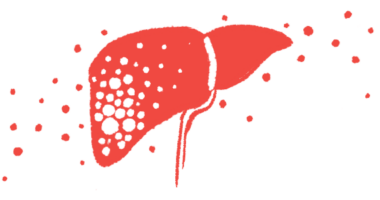TFW treatment for EPP becomes a national priority
We're on the cusp of that brighter day we've all been pushing for

Nearly 17 years ago, when my son Brady was diagnosed with erythropoietic protoporphyria (EPP), I fell to the floor in a puddle of fear. How would my little boy avoid the sun for the rest of his life?
There were no easy answers, and there certainly were no easy options. We learned to manage minute by minute, season by season.
As Brady grew up, we supported each other and learned to shout from the rooftops about this little-known disease that hurts so much, yet is seen so little.
Last week, something remarkable happened. (I know, I keep reporting remarkable things!) Bitopertin (GlyT1 inhibitor), an experimental oral medication being developed for EPP by Disc Medicine, received a Commissioner’s National Priority Voucher from the U.S. Food and Drug Administration (FDA). This is a new pilot program that can compress the review process to roughly one or two months. For a rare disease community used to waiting years, this is stunning news.
The next chapter will be different
If you’re new to bitopertin, here’s the simple version: In EPP, painful reactions to light are driven by a toxic buildup of protoporphyrin IX (PPIX). Bitopertin is designed to lower PPIX. Disc has submitted a new drug application for accelerated approval, using PPIX reduction as a surrogate endpoint. Patient-reported outcomes suggest more time outdoors and fewer painful days, which is the heartbeat behind the numbers.
Educational aside: A surrogate endpoint is a substitute measure used in clinical trials when waiting for the direct clinical outcome would take too long or be impractical or unethical. In EPP, lowering PPIX in blood can reasonably predict more pain-free time in light, so it can be used for accelerated approval while longer-term outcomes continue to be studied.
The FDA created the condensed review process to elevate products that meet clear national priorities, such as addressing unmet medical needs, without lowering the bar for safety or effectiveness. Bitopertin’s voucher signals that what matters to families like mine is being recognized at the highest level of government.
So how on earth did a tiny disease community land on a national priority list at the FDA? I have a front-row seat to the answer. It took well-placed priorities at the federal agency. It took a focused industry partner that listened to the patient’s voice. It took patient engagement at every step, from trial design to diaries to meetings where our lived experience shaped the questions. Most of all, it took the unmet need that has defined daily lives in EPP.
And hold on, there’s more momentum: The EPP pipeline is growing. Gondolabio, through its affiliate Portal Therapeutics, just announced that PORT-77 — an oral small molecule therapy being developed — received both orphan drug and fast track designations from the FDA for EPP and X-linked protoporphyria (XLP). It’s a different mechanism with the same goal: reducing suffering and complications due to PPIX.
Earlier this year, Mitsubishi Tanabe completed enrollment for its Phase 3 INSPIRE study (NCT06144840) of dersimelagon (MT-7117) in EPP and XLP, with top-line data expected this fall. Earlier studies pointed to more symptom-free time in sunlight — another potential option on the horizon!
Back to Brady. He is my son, and he has EPP. His life has been measured in minutes of light and miles of planning. He has kept the faith when his days were hard. I would take every minute of this disease from him if I could. Since I cannot, I will welcome this moment instead. I’ll take a national priority voucher for a therapy that targets the cause of his pain. I will take a faster review that still holds the line on safety. I will take the chance that the next chapter for our community will read differently.
To the FDA reviewers who will read the bitopertin file: I hope you hold both truths at once — the solidity of the data and the weight of the lived reality behind it. To every sponsor leaning in with our community: Keep listening. To the families, especially those just diagnosed: There is reason for practical hope. What felt impossible when Brady was 3 years old has now come into view because people across the fields of science, policy, and advocacy decided to move together.
Seventeen years ago, I was on the floor. Today, our community is on the review docket. That is what Hope in Action looks like!
Note: Porphyria News is strictly a news and information website about the disease. It does not provide medical advice, diagnosis, or treatment. This content is not intended to be a substitute for professional medical advice, diagnosis, or treatment. Always seek the advice of your physician or other qualified health provider with any questions you may have regarding a medical condition. Never disregard professional medical advice or delay in seeking it because of something you have read on this website. The opinions expressed in this column are not those of Porphyria News or its parent company, Bionews, and are intended to spark discussion about issues pertaining to porphyria.








Ginger Gonsalves
I never thought I would see treatment in my lifetime.
What an amazing time for our community.
Herb Bonkovsky
Dear Dr. Wheeden--Terrific update and overview. Thanks and congratulations. The future for our patients with EPP/XLP looks brighter and brighter--and with them also able to partake in the brightness of a new day.
Kristen Wheeden
With thanks to absolute experts and legends like you, Dr. Bonkovsky!!
Steve Shedlofsky
I am also moved by Brady's and your story about living with EPP. My hope is that when bitopertin is approved (and I have to be careful about having a bias, since I'm on the DMC) it will be inexpensive enough to be accessible to all the people who need it. I am also lobbying for it to be named "Loproto".
Kristen Wheeden
Thank you, Dr. Shedlofsky - we appreciate your work and care for porphyria patients! We also hope that bitopertin (Loproto??) is accessible to all who want it once FDA approved.